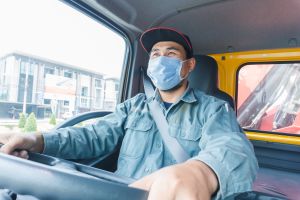 We hear a lot about our essential workers in healthcare, but there’s another group of essential workers for whom we need to pay close attention. Truck, Trailer and Package Delivery Drivers–Essential workers in the Transportation Industry–are at a higher risk for various ergonomics-related illnesses and injuries.
We hear a lot about our essential workers in healthcare, but there’s another group of essential workers for whom we need to pay close attention. Truck, Trailer and Package Delivery Drivers–Essential workers in the Transportation Industry–are at a higher risk for various ergonomics-related illnesses and injuries.
According to the US Bureau of Labor Statistics (BLS), in 2018 the recordable injury rate for transportation and warehousing was 4.5, with only agriculture, forestry, fishing and hunting “ahead” of it. The average for all industries was 2.8. For Lost Workday Injuries, the most severe, the case rate was 2.1, more than double the 0.9 all-industry average.
The BLS numbers are also striking when looking at ergonomics-related cases. In 2015, the number of median days away from work for ergonomics-related soft tissue cases in Transportation was 30, about five times that of nursing assistants. This means that their injuries can be pretty severe.
Whole body vibration is an ergonomics risk factor to which transportation employees are often exposed. If you have ever gotten airsick from turbulence, or had an upset stomach while riding in a car up, down and around hills, you’ve experienced a form of whole body vibration. Now imagine yourself riding in a truck all day long, whether an in/out route or cross-country, and feeling what may seem like every bump in the road. This kind of vibration can damage the internal organs–and the spine.

Material handling issues are also a big challenge for transportation, distribution, and package delivery companies. Drivers may be delivering cases of beverages, foodstuffs, pallets of goods, or items ordered online (or by mail–some people still do!) I’ve worked with the loading, unloading and/or delivery of just about everything–including houses! They’re under a time crunch, but also have to contend with the elements. I have worked with drivers in January in northern Illinois, Wisconsin, Minnesota, and other places, too. In the middle of the night. (It gets so cold your nose hairs freeze!) The cold affects an employee’s ability to keep the muscles warmed-up enough for safe material handling, so they tend to see more lifting-related injuries and illnesses.

What is your company doing for your essential transportation workers? When was the last time you sent an ergonomics and safety professional to ride-along and find ways to help these important people? I prefer to look at “worst-case” scenarios, and now, when people are ordering more and more stuff for home delivery every day, is the right time to learn how to better help your employees–and your company–succeed.
Contact us today so we can start helping you help these important people!